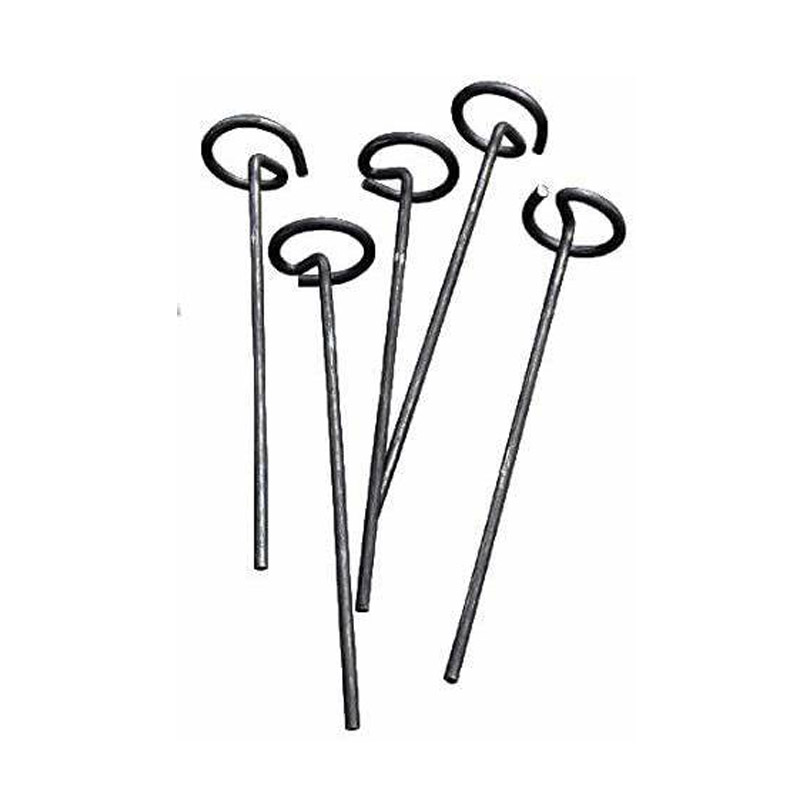
- Mobile Phone
- +8613931874955
- sales@cntcmetal.com
Understanding Flanged Compression Springs and Their Applications in Engineering
Flanged Compression Springs Critical Components in Modern Engineering
In the realm of mechanical engineering, springs play a vital role in various applications, providing essential functions such as energy storage, shock absorption, and tensioning. Among the myriad types of springs, flanged compression springs are a specialized category that has garnered attention due to their unique design and advantages. This article aims to explore the characteristics, applications, and benefits of flanged compression springs, highlighting their significance in various industries.
Understanding Flanged Compression Springs
Flanged compression springs are a type of helical spring characterized by their flanged ends. Unlike traditional compression springs that have plain or closed ends, flanged compression springs feature a circular disc or flange on both ends, which provides additional stability and prevents lateral movement. This design enhancement allows for improved load distribution and helps maintain the alignment of the coil, making them suitable for applications where high precision and stability are necessary.
Typically constructed from high-quality materials such as stainless steel, carbon steel, or alloys, flanged compression springs can withstand various environmental conditions, including extreme temperatures, humidity, and corrosive substances. The flanges can be configured in different shapes and sizes, providing versatility in design and enabling engineers to tailor springs according to specific application requirements.
Applications Across Industries
Flanged compression springs find usage across a diverse range of industries, reflecting their versatility and reliability. In automotive engineering, they are often employed in suspension systems and seat adjusters, where precise load management and spring alignment enhance overall performance and passenger comfort. Their ability to absorb shocks and vibrations makes them essential components in vehicles designed for both on-road and off-road conditions.
In the aerospace industry, flanged compression springs are crucial in various mechanisms, including landing gear systems, control surfaces, and fuel systems
. The flanged ends provide extra stability, ensuring that these critical components function reliably under varying atmospheric pressures and mechanical stresses encountered during flight.flanged compression spring

The medical sector also benefits from these specialized springs. In devices such as surgical instruments, dental equipment, and patient monitoring devices, flanged compression springs provide the necessary force and motion control. Their clean design and straightforward maintenance make them suitable for medical applications, where hygiene and reliability are paramount.
Advantages of Flanged Compression Springs
The design of flanged compression springs offers several advantages that contribute to their widespread adoption. One of the primary benefits is enhanced stability. The flanged ends prevent bowing or bending of the spring during compression, which can lead to failure in standard compression springs. This stability ensures a longer lifespan and consistent performance under varying load conditions.
Another significant advantage is the improved load distribution that flanged compression springs provide. The presence of flanges helps evenly distribute the applied load across the entire coil, reducing stress on specific points and minimizing the risk of premature wear or failure. This makes them ideal for applications requiring precise load management, such as in heavy machinery or structural systems.
Moreover, flanged compression springs are adaptable to various manufacturing techniques, allowing for customization. Engineers can specify the diameter of the flanges, the number of coils, and the spring's overall dimensions to fit specific assembly requirements. This customization capability means that flanged compression springs can be integrated seamlessly into existing designs.
Conclusion
Flanged compression springs are indispensable components that exemplify the marriage of form and function in engineering design. Their unique characteristics—such as enhanced stability, improved load distribution, and adaptability—all contribute to their suitability across a variety of applications. As industries continue to evolve, the demand for reliable and efficient components like flanged compression springs will only grow. Their ability to provide essential functions while ensuring safety and performance solidifies their importance in modern engineering. For engineers and designers, understanding the benefits and applications of flanged compression springs is crucial to leveraging their potential in innovative designs and projects.
share:
-
Why Sacrificial Formwork Is Redefining Underground ConstructionNewsJun.06,2025
-
The Structural Dynamics of Modern Concrete: How Snake Spacers Revolutionize Flexible ReinforcementNewsJun.06,2025
-
Snake Spacers Smart-Lock Concrete Reinforcement with Surgical PrecisionNewsJun.06,2025
-
Snake Spacers: Reinforcement Precision for Modern Concrete ProjectsNewsJun.06,2025
-
Snake Spacers Powering Concrete's Structural DNANewsJun.06,2025
-
Slither into Success: Snake Spacers' Precision Bite for Unbreakable ReinforcementNewsJun.06,2025
-
Sacrificial Formwork: Building Stronger, Faster, and Safer StructuresNewsJun.06,2025



















